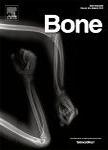版权所有:内蒙古大学图书馆 技术提供:维普资讯• 智图
内蒙古自治区呼和浩特市赛罕区大学西街235号 邮编: 010021

作者机构:Hacettepe Univ Inst Hlth Sci Dept Stem Cell Sci Ankara Turkiye Hacettepe Univ Ctr Stem Cell Res & Dev PEDI STEM Ankara Turkiye Hacettepe Univ Dept Analyt Chem Ankara Turkiye Hacettepe Univ Dept Pediat Div Hematol Ankara Turkiye Hacettepe Univ Fac Med Dept Plast Reconstruct & Aesthet Surg Ankara Turkiye
出 版 物:《BONE》 (Bone)
年 卷 期:2025年第193卷
页 面:117413-117413页
核心收录:
学科分类:1002[医学-临床医学] 100201[医学-内科学(含:心血管病、血液病、呼吸系病、消化系病、内分泌与代谢病、肾病、风湿病、传染病)] 10[医学]
主 题:Bone marrow adipose tissue Acute myeloid leukemia Fanconi anemia Mesenchymal stem cells Metabolomics Lipidomics
摘 要:Bone marrow is a complex tissue featuring distinct cellular organization and diverse cell types. Bone marrow adipose tissue (BMAT) is a dynamic component crucial for tissue function and disease processes. This study explores differences between bone marrow-derived mesenchymal stem cells (BM-MSCs) and BMAT-derived mesenchymal stem cells (BMAT-MSCs), isolated from the same cavity, examining their differentiation potential and secretory profiles. BM-MSCs and BMAT-MSCs both exhibit classical mesenchymal characteristics, with over 90 % positivity for markers such as CD105 and CD29. Notably, BMAT-MSCs display significantly higher differentiation potential than BM-MSCs, with enhanced osteogenic and adipogenic capabilities, as indicated by increased calcium accumulation and lipid storage. In Fanconi anemia (FA) and acute myeloid leukemia (AML), osteogenic potential is limited, indicating impaired differentiation under these pathological conditions. Gene expression analysis of adipogenic molecules and metabolic regulators revealed significant differences in expression profile between BM- and BMAT-MSCs, particularly during adipogenic differentiation, indicating distinct characteristics that were more notable in FAs and AMLs. Furthermore, metabolomic profiling of BM plasma, using GC-MS for in-vivo niche reflection, and lipid analysis via LC-qTOF-MS show significant lipidomic alterations in patient samples, highlighting metabolic dysregulation and lipid remodeling. Lipid-mediated signaling and membrane composition changes appear integral to disease mechanisms. In conclusion, this study highlights the distinctive molecular and metabolomic profiles and adaptive mechanisms of BM- and BMATMSCs in bone marrow pathologies.